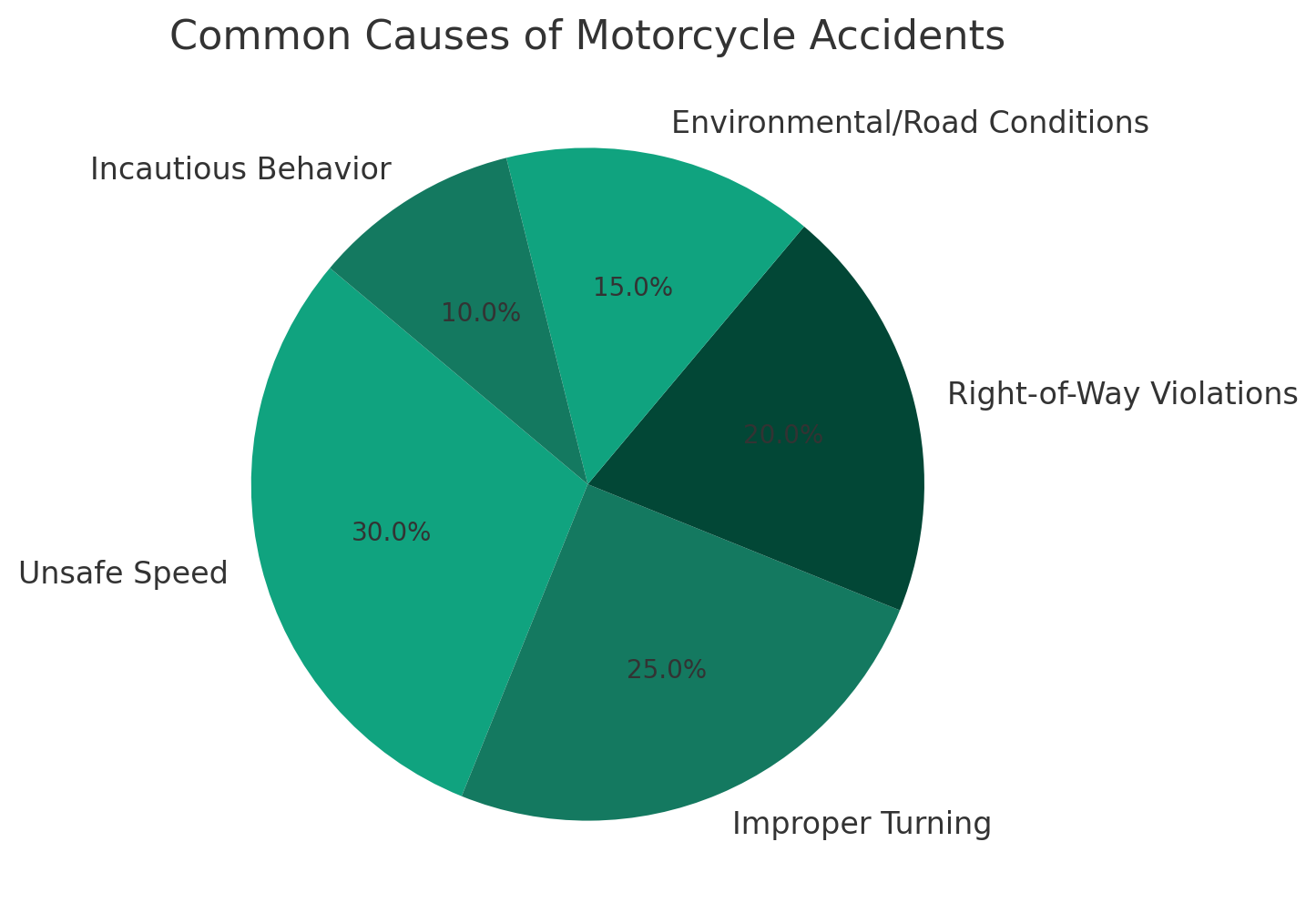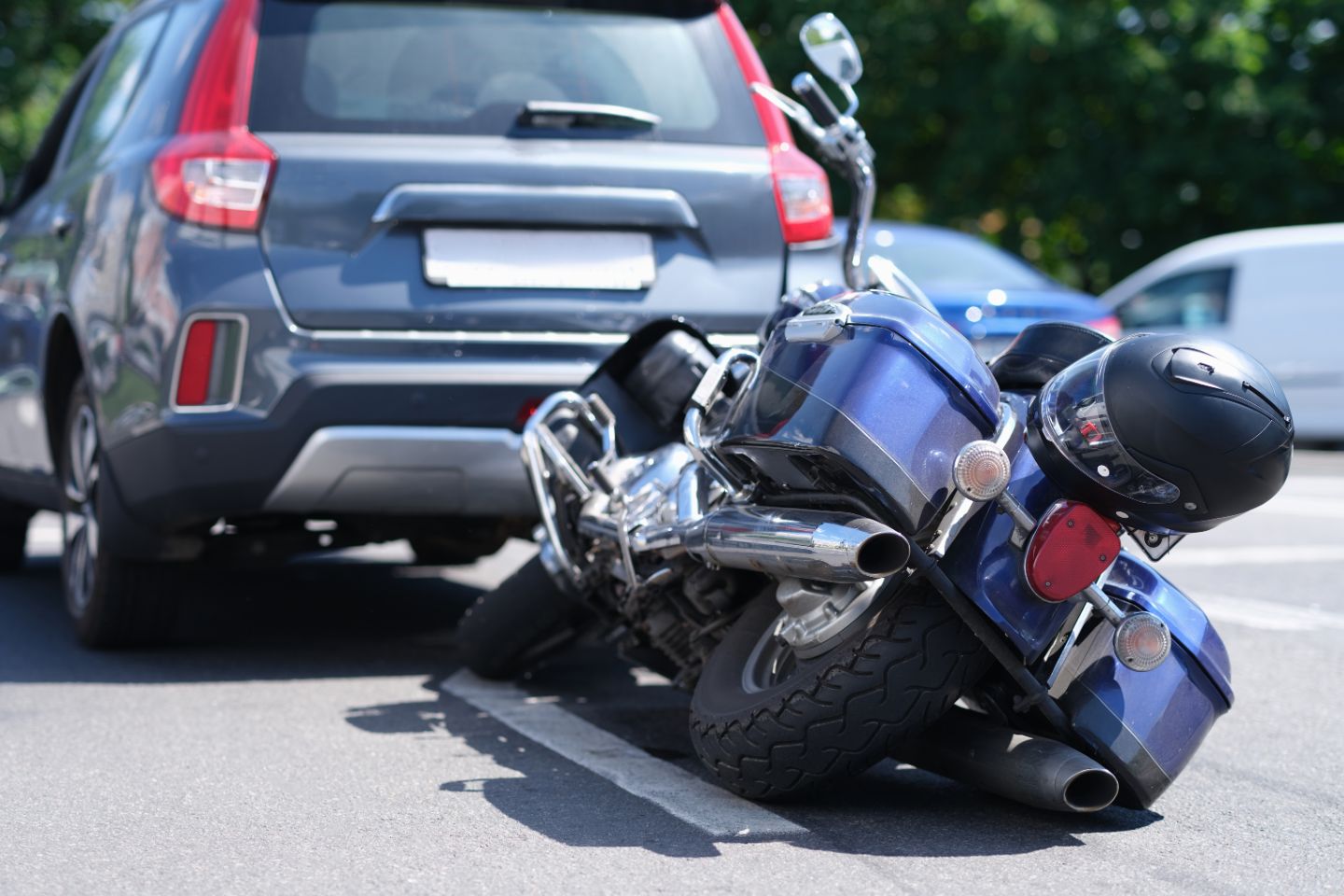California, undoubtedly, is one of the vivacious and full of life states of the US. Motorcycle riding adds energy to life there. However, it is sadly one of the states with the highest number of motorcycle accidents. Motorcycles are a popular mode of transportation in California mainly due to the size of the state, but the number of motorcycles are increasing day by day and this has become a grave issue. According to the state’s Department of Motor Vehicles (DMV) reports, in 2021 there were over 11,000 motorcycle accidents in California, resulting in over 500 fatalities.
For anyone involved in a motorcycle accident, it can be a doleful and extremely upsetting experience. In addition to physical harm and mental trauma, an accident can put strain on one’s finances as well.
The legal framework governing motorcycle accidents is complex in California therefore, it is important to understand the laws and regulations that apply to these accidents to ensure that you are protected in the event of an accident.
Overview of California Motorcycle Accident Statistics
As stated above, California is notorious for a high number of fatal motorcycle accidents per year. In this section, we will provide an overview of the annual trends and comparative analysis by region of California motorcycle accidents.


Annual Trends
The California Office of Traffic Safety reported a 3% increase from 549 in 2020 to 565 in 2021 in motorcycle fatalities [1]. Additionally, there was a 9% increase from 34 in 2020 to 37 in 2021 in fatalities from not wearing a helmet, hence proven, wearing a helmet is necessary for safety.
Comparative Analysis by Region
The California Active Transportation Safety Information Pages provide interesting insights into the comparative analysis of motorcycle accidents by region in California [2]. According to their report, in 2020, there were 6,721 pedestrian deaths in the United States, which is a 4.8% increase from the deaths reported in 2019. The same report also highlights that the majority of pedestrian deaths occur in urban areas, and that California has the highest number of pedestrian fatalities in the United States.
In summary, it is evident that the situation of motorcycle accidents in California is a concerning issue and increased awareness along with preventive measures is the need of the hour.
Legal Framework Governing Motorcycle Accidents in California
In California, the legal framework governing motorcycle accidents is intact and comprehensive. It is designed to ensure the safety of riders and provide a legal framework for seeking compensation in case of accidents. Two important aspects of this framework are detailed below.
State Laws and Regulations
California has several state laws and regulations that govern motorcycle accidents such as:
- Comparative negligence law: This law helps determine damages awarded to accident victims. Under this law, if a rider is found to be partially at fault for an accident, their damages will be reduced proportionally to their degree of fault.
- Lane splitting law: California is the only state in the US that allows lane splitting, which is the act of riding a motorcycle between lanes of traffic. However, lane splitting is only legal when done safely and prudently.
- Helmet law: California has a universal helmet law that requires all motorcycle riders and passengers to wear helmets that meet certain safety standards. Failure to wear a helmet can result in fines and other penalties.
- Insurance requirements: California requires all motorcycle riders to have liability insurance that covers at least $15,000 for injury or death to one person, $30,000 for injury or death to more than one person, and $5,000 for property damage.
Helmet and Safety Gear Requirements
In addition to the helmet law, California has several other safety gear requirements for motorcycle riders. These include:
- Eye protection: All riders are required to wear eye protection, such as goggles or a face shield, unless their motorcycle has a windshield.
- Footrests: All motorcycles must have footrests for the rider and passenger.
- Reflective clothing: Riders are required to wear reflective clothing when riding at night.
- Lane position: Riders must ride in a position that allows them to see and be seen by other drivers.
By following these laws and regulations, motorcycle riders can help ensure their safety and protect their legal rights in case of an accident.
Causes and Risk Factors of Motorcycle Accidents


Motorcycle accidents can be caused by factors such as the motorcyclist’s behavior, road and weather conditions. The first step to preventing such incidents from happening is to understand the reasons behind them.
Common Causes
According to a study by the National Transportation Safety Board (NTSB), the most common causes of motorcycle accidents include unsafe speed, improper turning, and right-of-way violations by automobiles. Left-turn accidents are also common, as motorcycles are often struck during right-of-way errors, misjudgments, and illegal left turns. Inexperienced drivers tend to make unsafe decisions and misjudgments, and drive more recklessly than experienced riders.
Environmental and Road Conditions
Motorcycle accidents also occur because of poor environmental and road conditions. Motorcyclists can lose control due to slippery roads, potholes, debris on the road and additionally, fog or rain.
Motorcyclist Behavior
Incautious behavior, not abiding by traffic rules and regulations, and driving under the influence are also a reason for motorcycle accidents in California.
Motorcyclists should always wear protective gear, follow traffic laws, and ride defensively to avoid an unfortunate happening.
Impact of Motorcycle Accidents
Motorcycle accidents can have devastating consequences for the individuals involved. The physical and emotional toll can be significant, as can the economic burden on victims.


Physical and Emotional Consequences
Motorcycle accidents often result in serious injuries, such as head trauma, spinal cord injuries, and broken bones. These injuries can lead to long-term disabilities, chronic pain, and a reduced quality of life. In addition to the physical injuries, motorcycle accidents can also have a significant emotional impact on victims. They may experience anxiety, depression, and post-traumatic stress disorder (PTSD) in the aftermath of the accident.
Economic Burden on Victims
The economic burden of motorcycle accidents can be substantial. Victims may face significant medical expenses, including hospitalization, surgery, and rehabilitation. They may also be unable to work for an extended period, resulting in lost wages and a reduced earning capacity. Additionally, victims may need to pay for modifications to their home or vehicle to accommodate their injuries.
According to the Office of Traffic Safety, motorcycle fatalities increased by 3% from 2020 to 2021 in California. Additionally, the number of motorcyclist deaths from not wearing a helmet increased by 9% during the same period. These statistics highlight the importance of motorcycle safety and the need for increased awareness and education for both riders and drivers.
Preventive Measures and Safety Tips
Even though accidents can be an uncontrollable phenomenon, precautionary measures can always help lessen the chances of a motorcycle accident. We discuss some safety tips to help reduce the risk of motorcycle accidents.
Rider Education and Training
One of the most important preventive measures is to get proper rider education and training. Riders should enroll in a motorcycle safety course to learn the skills and techniques needed to operate a motorcycle safely. For this purpose, the California Highway Patrol (CHP) facilitates the citizens with a California Motorcyclist Safety Program (CMSP) which provides training for both novice and experienced riders.
Public Awareness Campaigns
Public awareness campaigns are an effective and powerful way to educate both riders and drivers about motorcycle safety.
The “Share the Road” campaign is one example of public awareness campaigns that encourages drivers to be aware of motorcycles on the road and to share the road with them. The campaign also encourages riders to ride responsibly and to wear proper protective gear.
A few of the other preventive measures can include:
- Always wearing a helmet and protective clothing that meets Department of Transportation (DOT) standards.
- Maintaining a safe following distance from other vehicles.
- Avoiding riding in inclement weather conditions.
- Checking the motorcycle’s brakes, tires, and lights before riding.
- Being visible on the road by wearing bright or reflective clothing.
The above mentioned are some of the tips motorcyclists must follow for a safer ride in California.


Key Takeaways
|
Frequently Asked Questions
What are the latest statistics on motorcycle fatalities in California?
According to the California Office of Traffic Safety, there were 474 motorcycle fatalities in California in 2020. This represents a 12% increase from the previous year.
How do motorcycle death rates in California compare to those involving cars?
In California, motorcycle fatalities account for approximately 14% of all traffic fatalities. This is a disproportionately high number considering that motorcycles make up only 3% of registered vehicles in the state.
What percentage of motorcycle crashes in California result in fatalities?
In California, approximately 80% of all motorcycle crashes result in injury or death. This is significantly higher than the rate for car accidents, which is around 30%.
Which age group is most affected by motorcycle accidents in California?
Motorcycle accidents in California tend to affect riders between the ages of 20 and 29 the most. However, riders over the age of 50 are also at a higher risk of being involved in a fatal accident.
What are the common causes of motorcycle accidents in California?
The most common causes of motorcycle accidents in California include speeding, lane splitting, alcohol impairment, and failure to yield the right of way. In many cases, these accidents are caused by drivers of other vehicles who fail to see or yield to motorcyclists.
How does California’s motorcycle accident rate compared to other states?
California has one of the highest rates of motorcycle accidents in the United States. However, it is important to note that this is partly due to the state’s large population and high number of registered motorcycles. When adjusted for population, California’s motorcycle accident rate is similar to that of other states.
If you are a victim of a motorcycle accident in California and seeking medical as well as legal assistance then, do not worry anymore. The Personal Injury Center will help you during this difficult time period and get back to life. We associate you with the proficient legal experts who will provide guidance through the legal process. Contact us today and begin your journey of recovery.



